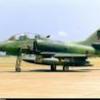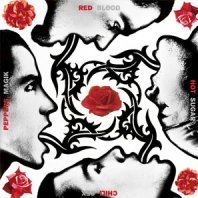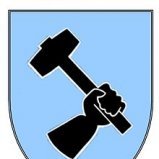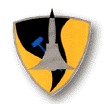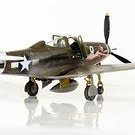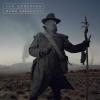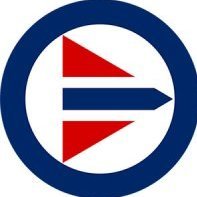Search the Community
Showing results for tags 'Eduard'.
Found 2,478 results
-
Hi Friends, Happy new year for everyone. I start my Britmodeller this year with my last build (finished some months ago). The old mould but totally accurate to the todays standards of modelling manufacturers F4 Corsair in 1/48th by Tamiya. All is very well engineered as usual by Tamiya, the fit is superb. I added some rivets with my Trumpeter's riveting tool and also the Eduard Photo Etched extra parts to upgrade the bird. I added some extra scratch build to the cowling to simulate the mechanism to open or close the vent doors. It's a nice plane, and very cool for weathering. Also this kit from Tamiya has a very well detailed OOB cockpit. I hope you like it, Cheers Ricardo
- 28 replies
-
- 53
-

-

-
This one has been hiding in the stash for quite a few years after I bought it last minute at Telford for £7.00. A bargain but I had no plans for it so it just sat there. I fancied a quick build over the Holiday period, not a blitzbuild as such but a brain cleanser to help with a couple of stalled builds. OOB except for some lead foil seatbelts and a layer of card in-between the wheel halves to beef them up. Of course on seeing the photos I realised I had not fitted the wingtip light covers, which has now been remedied. The markings are those included in various boxing's of the kit but in my case were made up from a set of BFP decals from an old issue of Model Aircraft Monthly from the great days when Neil Robinson was editor. Thanks for looking.
-
This is my 5th build after I came back to modelling and also my first model where I'm going to use airbrush, therefore I decided to document the build. The kit is by Eduard.
-
Here is the second of the last two kits of 2019, both being Eduard's 1:144 Mikoyan-Gurevich MiG-15UTI "Midget". This one represents 2832 of the AVRK (Royal Khmer Aviation), Cambodia, 1964 onwards. It was also built from an "overtrees" set with markings from JBr Decal's "Mighty Midgets" Part 1 sheet. Build notes are the same as for the other (Sri Lankan) MiG-15UTI so I won't repeat them. The kit was fully painted and varnished by brush and I made some weathering/painting experiments with pre and post shading with mixed results though I am pleased with it. I used RLM02 for the overall Grey-Green colour since I had nothing else and it seemed very much like the colour used on Cambodian MiG-17s. I did some pre-shading with black and post-shading with another green. Thank you for looking and all comments are welcome Miguel
-
Hello all! Here is one of the last two kits of 2019 that I managed to finish the day before leaving for my Christmas holidays last month, both being Eduard's 1:144 Mikoyan-Gurevich MiG-15UTI "Midget". This one represents CF801 of No. 6 Sqn, Sri Lankan Air Force in the 1970s. It was built from an "overtrees" set with markings from JBr Decal's "Mighty Midgets" Part 1 sheet. The kit was built OOB just adding belts from Tamiya tape in the cockpit and the radio wire and replacing the overly thick wing pitot tube with one from stretched sprue. The kit went together well with most problems being of my own making but others were of the kit itself. Some parts needed to be well trimmed/cleaned up to fit properly, the most notable part being the canopy. I failed to get it 100% right and ended up having to do some sanding to blend the rear and filling some gaps with Kristal Klear. The big challenge was putting sufficient weight to avoid tail-sitting. I packed weight above the engine splitting plate, along the sides of the cockpit, below the cockpit and a little behind it. As a note, you CAN add the nose u/c AFTER joining the fuselage - it's a bit tricky but possible (I missed that and had to do it this way). The kit was fully painted and varnished by brush and I made some weathering/painting experiments with mixed results though I am pleased with it. Because of the way I did the dry-brushing (on gloss instead of on matt), I feel I overdid the weathering as I prefer a more subtle effect. Since I was working on a self-imposed deadline, I didn't try to fix it. Thanks for looking and all comments are welcome as always Miguel
-
This was my last model of 2019, finished right before Christmas. Eduard’s latest 190, the A-8 version, vastly superior to the “old” moulds from 2010 or so, is a pleasure to build and should provide a rewarding experience to all kind of modelers. the model tries to depict Rudy Artner JG.5 plane. It’s my own interpretation from the few B&W photos coupled with some educated guessing. Painted with Mr. Hobby 74/75/76, MRP 04 and Real Colors late 81 for the green stripes. decals came from Sky models and Xtradecals for insignias. Besides the box contents I used Bregun wheels and Aber brass guns and Pitot tube. Hope you enjoy, wishing all a splendid 2020!
- 27 replies
-
- 53
-

-
MiG-15bis - ProfiPACK Edition (7059) 1:72 Eduard The Mikoyan-Gurevich MiG-15 was the most famous fighter aircraft to emerge from behind the Iron Curtain during the early years of the Cold War. Although a Soviet design, the MiG-15 made use of captured German research on the aerodynamic properties of swept wings, combined with a reverse engineered Rolls Royce Nene turbojet engine. The resulting aircraft was a triumph, easily outclassing the more conventional jet fighters then in service. In order to ensure it could perform adequately as a bomber destroyer, it packed a formidable punch, with two 23mm cannons and a single 37mm cannon mounted in a pack under the nose. The MiG-15 was the original production version, which lacked the range of small improvements made to the follow-on bis variant. The MiG-15 made its combat debut during the Korean War, where it proved a nasty shock for UN forces. It wasn't until the North American F-86 Sabre became available that American forces had anything able to hold its own against the new Soviet fighter. The MiG-15 went on to become one of the most widely produced jet fighters in history and saw service with air forces around the world. The Kit Inside the sturdy box are three sprues of grey plastic and a clear sprue. There is also a small PE Sheet and masks (not shown) The overall impression is of a really premium quality package. The quality of the mouldings is up to the usual Eduard standard. Details are clean and crisp and there are no flaws anywhere. As with other recent kits from Eduard, there is plenty of fine detail, with parts such as the cockpit comparable to high-end resin items. The surface detail on the outside of the airframe is comprised of recessed panel lines with delicately engraved rivet and fastener details. The kit does not have a massive amount of parts but is still fairly detailed and now doubt the best MiG-15 kit available in 1.72. The first step in construction is the cockpit area. A part seat is put together and then inserted into the cockpit. Like the real aircraft the cockpit sides form the inside of the intake as well. Front and rear bulkheads are added to the floor and sides to complete the cockpit. A separate control column is added. PE is provided for the side panels, and the seat belts. The front wheel well is made up from two parts and attached to the front cockpit. The next step is to make up the jet pipe/exhaust. This is two parts with a further part making the exhaust part of the engine. Once this and the cockpit are completed they can be added to the fuselage halves along with the rudder parts. The fuselage can then be completed. The next step to then tackle is to make up the wings. These are of conventional construction split top/bottom. Holes must be made for the drop tanks. Once these wings are complete they can be attached to the completed fuselage along with the tail planes. Final construction steps are to add the gun pack under the front fuselage, the nose intake ring and some external antennas. The landing gear can be made up, the front is a one part fixing where as the mains are four part affairs with separate hubs. Once the gear doors are attached the canopy can be added along with the drop tanks. Canopy A largish clear sprue is provided as seems to be Eduard's want. This seems to be a good idea as I have never had loose canopies rattling round their boxes, or any damage to clear parts. They are well moulded and thin for the scale. They look clear and should provide the modeller with no problems. Decals As this is the Profipack boxing 5 decal options are provided. The decals are printed in house and look to be sharp, in register and fault free. The five options are; 518th IAP, North Korea May 1953 (Flown by Maj Mikhail Ivanovich Mikhin 15 SP, Czechoslovak Air orce, Cotbus Airfield East Germany 1957 1st Sqn, 101st Recon Regiment, Szolnok, Hungary 1972 No 20 Sqn, Egypt late 1950s/early 1960s ex 64 IAK, USSR mid 1950s. Aircraft was maked as North Korean for service in the war there, and these markings still visible. Conclusion This kit is both accurate and well engineered, putting other 1:72 kits of the type in the shade. The level of detail Eduard have packed in is superb, as is the treatment of surface details. Highly recommended. Review sample courtesy of
-
Hi comrades! Here my recently finished Luftwaffe's shturmovik, built from profipack box with small additions from scratch This kit is IMHO bad! I hope, the 2ed of Fw-190 by Eduard is better Only light weathering is added - I believe, because of new weapons, logistics problems (mainly fuel shortage) it's makes only seldom flights Thanks for looking!
- 11 replies
-
- 14
-

-
Hi comrades! My next build is twin! The old DML (I have it since 1992 😜) and 1st edition of Eduard will be built as last ground attackers of Luftwaffe, both from 1945 in Czechoslovakia airfields. The variants will be with different ordnance: Eduard - with Panzerschreck, DML with bombs So far, interior was finished and main construction completed for both kits. The DML fuselage was widened in the bottom aft section to produce the wing-to-fuselage joint without gaps. Main issue with Eduard is closing the unwanted openings on the wings - the only use of putty so far. Now we are almost ready for the primer! Eduard is in olive colored plastic. Thanks for looking!
-
KORA Models rebox from the Eduard 1/72nd Fw.190 kit. - ref.KPK7231 - Focke-Wulf Fw 190F-8/R-1 SG.2 Source: https://www.lfmodels.com/index.php?main_page=product_info&products_id=2459&zenid=0joelrks75lnhbmghm6b8gv8u6 - ref.KPK7232 - Focke-Wulf Fw 190F-8 SG.4 in Italy Source: https://www.lfmodels.com/index.php?main_page=product_info&products_id=2460&zenid=0joelrks75lnhbmghm6b8gv8u6 - ref.KPK7233 - Focke-Wulf Fw 190F-8 SG.5 in Finland Source: https://www.lfmodels.com/index.php?main_page=product_info&products_id=2461&zenid=0joelrks75lnhbmghm6b8gv8u6 - ref.KPK7234 - Focke-Wulf Fw 190F-8 Sonderverband Einhorn und III/KG 200 Source: https://www.lfmodels.com/index.php?main_page=product_info&products_id=2462&zenid=0joelrks75lnhbmghm6b8gv8u6 V.P.
- 10 replies
-
- Fw.190
- Kora Models
-
(and 1 more)
Tagged with:
-
Hello everyone, New member here, with just a few years of experience building models. After a few disappointing results when I was young, I have decided to invest time and resources to make better models, and therefore enjoy this hobby even more! I am currently finishing my latest project, a 1/48 Eduard BF 109 F-2, and ask, humbly, for your help and experience. After setting all the decals, and spending too much time on YouTube, I understood that the next step was to protect everything with a gloss clear coat before moving on to weathering and emphasizing the details. I've used Mr Color Super Clear III (UV cut) diluted with Mr Color Leveling thinner 400, 1 part clear for 3 parts thinner, as recommended by Plasmo. Sprayed with an airbrush, it works wonders! Now time for the panel line wash from Tamiya, and the start of my problems... From looking at various modellers and their works, the panel liner is meant to flow quickly in the panel lines, and stay there. Only a small amount of enamel paint should be left on the panels themselves, and it should be easy to remove with a brush or a cloth dampened in enamel thinner. This can bee seen in the circled areas in the picture bellow (scalespot.com for credits): When I tried to do so, the result was quite different. The panel liner flowed onto the panels themselves, and it looked like it was getting mixed with the grey paint itself: (the paint is Tamiya acrylics, thinned with X-20A thinner, covered with at least three layers of gloss clear coat, as described at the top of the post) The excess panel liner was therefore quickly removed with a brush dampened in enamel thinners. Most of the excess panel liner could be removed, but it left a small but noticeable dark spot on the model, while removing what little paint had managed to stay between the panels: What should I do? Are the clear coats and the panel liner made from the same solvent, which explains the "mixing"? If yes, should change one of the two ? Should I try and polish my model with Tamiya polishing compounds, to create and glossy and hard shell over my paints and decals ? Should I add more layers of Mr Color Super Clear III ? Should I use Tamiya X-22 instead of Mr Color Super Clear III ? Am I missing something else ? Or is everything normal, and I'm just worrying for no reason ? 😁 I thank you all for your help and advice. Cheers, Mat
-
Hello everyone, Here is what will be my last model for 2019; Eduard's 1/72 MiG-21MF "Fighter-Bomber" kit completed as 9712 of the 9th Fighter Air Regiment, Czechoslovak Air Force as based at Bechyně in the period 1989-93. The kit is almost OOB but I managed to loose part D47 (rather vital for locating the exhaust!!) and used Eduards own resin replacement exhaust set. Paints are primarily Humbrol (186 and 149 for the uppers, 65 for the underside) supplemented by Xtracolor and Sovereign Hobbies tins. Although I have a 1/72 Spitfire Mk VIII and 1/48 Oeffag Albatros D.III in the stash, this is the first Eduard kit that I've completed and I must say that I'm very impressed - I didn't have to use filler and any mistakes in construction are purely down to me! Roll on the upcoming MiG-21PFM and PF kits! Only three photos unfortunately as although today has been a nice sunny day here in the North East of Scotland the light still wasn't that great for indoor photography! Comments welcome, Mike.
-
#29/2019 End of year factory clearing 😆 the next one finished. Eduard kit with Avalon decals, EZ Line for the antenna wire, plastic rods for brake lines, AK Real Color RLM76, Gunze and Tamiya for the upper RLM 75/83 camo (75 was lightened up a bit). Build thread here https://www.britmodeller.com/forums/index.php?/topic/235062358-end-of-war148-messerschmitt-bf109g-10wnfdiana-2jg52/ The model shows an aircraft of II./JG52 that was found at the end of the war on Czech territory. DSC_0001 by grimreaper110, auf Flickr DSC_0002 by grimreaper110, auf Flickr DSC_0003 by grimreaper110, auf Flickr DSC_0004 by grimreaper110, auf Flickr DSC_0005 by grimreaper110, auf Flickr DSC_0006 by grimreaper110, auf Flickr DSC_0007 by grimreaper110, auf Flickr DSC_0008 by grimreaper110, auf Flickr DSC_0009 by grimreaper110, auf Flickr DSC_0010 by grimreaper110, auf Flickr DSC_0011 by grimreaper110, auf Flickr DSC_0012 by grimreaper110, auf Flickr DSC_0013 by grimreaper110, auf Flickr DSC_0014 by grimreaper110, auf Flickr DSC_0015 by grimreaper110, auf Flickr DSC_0016 by grimreaper110, auf Flickr DSC_0017 by grimreaper110, auf Flickr DSC_0018 by grimreaper110, auf Flickr
-
#27/2019 After a long pause my father finally build a new WW1 model. This is Eduard´s latest boxing of the Schuckert D.III, used EZ Line for the rigging and for the first time some Gaspatch PE turnbuckles. All the large lozenge decals were a PITA to apply, didn´t turn out perfect. My father is no pro WW1 builder but the model looks ok. Build thread here https://www.britmodeller.com/forums/index.php?/topic/235058174-knights-in-the-sky148-siemens-schuckert-werke-diii-deutsche-luftstreitkräfte/ The model shows the aircraft of Vizefeldwebel Reimann, Kest 4b in September 1918. DSC_0001 by grimreaper110, auf Flickr DSC_0002 by grimreaper110, auf Flickr DSC_0003 by grimreaper110, auf Flickr DSC_0004 by grimreaper110, auf Flickr DSC_0005 by grimreaper110, auf Flickr DSC_0006 by grimreaper110, auf Flickr DSC_0007 by grimreaper110, auf Flickr DSC_0008 by grimreaper110, auf Flickr DSC_0009 by grimreaper110, auf Flickr DSC_0010 by grimreaper110, auf Flickr DSC_0011 by grimreaper110, auf Flickr DSC_0013 by grimreaper110, auf Flickr DSC_0014 by grimreaper110, auf Flickr DSC_0015 by grimreaper110, auf Flickr DSC_0016 by grimreaper110, auf Flickr DSC_0017 by grimreaper110, auf Flickr DSC_0018 by grimreaper110, auf Flickr DSC_0019 by grimreaper110, auf Flickr DSC_0020 by grimreaper110, auf Flickr
- 15 replies
-
- 31
-

-

-
Being first in I claim this STGB in the name of the Colonies! I have been waiting a while for this one to come, a chance to reduce the stash by a miniscule (it’s about to be re-filled) and a chance to add another RAAF beast to the collection and finally to build something I haven’t built before. So enter Eduard’s (Hasegawa) Limited Edition 1/32nd Warhawk P-40N……in a ridiculously huge box!!! There’s no photo’s of that as it was the first thing to go! Now in a smaller box with all the non-required parts removed, takes up way less space. I must say it does look to be beautifully moulded with nice fine details……. ……being a Eduard re-box it comes with some nice basic goodies…… ……plus a ridiculously huge decal sheet as well! Why not just do it in two sheets I don't know, it'd make storing them safely so much easier….. …… and finally being a Limited Edition release it comes with these “extras”, a poster of the cover picture along with an embossed metal plate with raised detail in all the right places!!! Is that it…..nup, it wouldn’t be a trickyrich build without some extras ………. ….Eduard’s love new Zoom series IP and Master Model Gun Barrel & Detail set. Finally the scheme, for me it couldn’t be anything else than a RAAF P-40, we used around 840 of them and they were an incredibly important aircraft for us during the war and played a critical role in some battles. So I’ll be using a lovely set of Ventura Decals for a RAAF P-40N Kittyhawk Mk.VI. The actual aircraft is “Watch my form”, a 79 Squadron P-40N-15 A-29-572 off Noemfoor Island (a tiny island just of West Papua) around late 1944. Here is an extract from the ADF Serials website for this particular aircraft; (this is from the decal sheet......... hmmm I wonder what the "Pink Highlights" are they're talking about!! ) served with 80 Sqn and 78 Sqn; on 10/2/44 received by 80 Sqn from 15 ARDRP; on 13/6/44 received by 78 Sqn from 22 RSU where it had gone for an engine change from 80 Sqn; on 19/8/44 while dodging ack-ack fire over the target the starboard wing struck a tree with P/O Richard Roy Cowley (405834) flying it home without further incident; on 13/9/44 received back at 78 Sqn from 22 RSU; on 8/1/45 it crashed while W/O Geoffrey James Bellamy (432737)was taking off at Wama strip Morotai when it blew out the port tyre and at the time was coded HU-P and had inherited the nose art of "Watch My Form"; on 15/1/45 approval was given to convert to components. I’m looking forward to this one, it should be a nice simple straightforward build for me for a change. One final interesting fact, Flt. Lieutenant Clive Caldwell (formally Group Captain) RAAF was the highest scoring P-40 pilot form any air force, 22 victories, he finished the war on 28.5.
- 47 replies
-
- 12
-

-
Got hold of a bunch of Eduard overtrees at a great price, two spits and two P51. As I've got some 1:48 RAF P51 xtradecals left over its RAF livery all the way! Quick start on the wheel wells this evening, first real attempt at busying up with some copper wire. Straight bit of 0.5mm to represent the linkage in the back, then a 0.8mm hole drilled into the floor and into some styrene rod to create a bulkhead adapter. Humble beginnings, but the kit looks amazing and hopefully I'll do it justice!
-
BODENPLATTE Fw 190D-9 & Bf 109G-6/14 1:48 Eduard Limited Edition For this limited edition boxing the kits are focused on German aircraft that participated in the Operation Bodenplatte on January 1, 1945. This was an attempt by the Luftwaffe to gain air superiority over the stalled Ardennes battlefield. The operation achieved surprise and initial success, however it ultimately failed. While many allied aircraft were destroyed on the ground actual aircrew casualties were light and most of the losses of aircraft were easily replaced. This would be the last strategic operation mounted by the Luftwaffe in WWII. This boxing contains two full kits, PE and masks (not shown). BF 109G-14A/S This edition from Eduard is the very very first release of Bf 109G-14/AS version in this scale. The G variant of the 109, colloquially known as the Gustav was one of the primary fighters available to the Luftwaffe during the closing years of WWII, and saw extensive active service, all the while being upgraded to combat the increasing Allied superiority in the air. Happily for the Allies, the supply of experienced pilots was fast running out, so as good as the upgrades were, they couldn't make an appreciable difference to the outcome. The G-14 was brought into service at a crucial time for the Axis forces, as the Allies pushed inland from the beachhead at Normandy, and it had an improved water injection system that gave the engine extra performance, plus the new clear-vision Erla-Haube canopy as standard. It was also an attempt to standardise the design to ease the job of construction, which had become decentralised due to the ferocity of the bombardment of the industrial areas by the Allied bombers at that stage of the war. As a result, few sub-variants were made of the G-14 even though over 5,000 were built, with command fighters and high-altitude variants the main exceptions, but the U4 had a high powered 30mm MK108 cannon fitted through the engine and firing through the centre of the prop. At the start of the build the modeller will need to decide to build the G-14 or the G-14/AS as two different fuselage sprues are in the box for both aircraft. Once the is done construction starts in the cockpit, which has a number of PE controls added to the floor, and a full set of PE instruments that are ready to add to the painted cockpit, as well as the fuel line part that is supplied on the clear sprue because it has a glass section as it runs through the cockpit to allow the pilot easy access for checking if there's fuel getting to the engine. A choice of humps between the pilots knees cater for the cannon fitted U4 sub-variants, and a full set of painted crew belts are supplied on the PE fret, plus rudder pedals for good measure. More PE is attached to the cockpit sidewalls, and with all that glued and painted you can close up the fuselage around it, not forgetting the retractable tail wheel used in one of the decal options, with a spinner back-plate fitted to the front of the fuselage, and the exhaust stubs with their slide-moulded hollow tips inserted from inside into their slots. The nose cannon insert, supercharger intake and cannon bulges in front of the windscreen fit into their respective areas, and a set of flame deflectors made from PE are added over the exhaust stacks to prevent blinding the pilot in low light flying. The G-14 had a couple of options for the tail fin, with the increased use of non-strategic wood, so the fin base is moulded to the fuselage, while the tip is one of two separate choices, with a straight rudder hinge, or the more familiar cranked hinge-line. The fixed tail wheel for four of the decal options is fitted to a recess under the tail at this point too. The wings are full span underneath, and depending on your decal choice you may need to open up some holes for a centre-line rack and on the port wing for the forward-raked antenna carried by most decal options. The wheel bay sides are modular and mate with the inner surface of the upper wings to give an excellent level of detail once finished. A small pair of rectangular panel lines are scribed into the fuselage just in front of the windscreen using a PE template that is provided on the sheet, and a pair of teardrop masks are supplied for the wingtip lights, which are moulded into the wing, but can easily be replaced by cutting out the area and fitting some clear acrylic sheet of a suitable thickness, then sanding it to shape and polishing it back to clarity. A depression depicting the bulb can be drilled in the clear part before gluing to further enhance the look if you feel minded. Separate leading-edge slats, ailerons and flaps are supplied, with the latter fitting around the radiator bays under the wing, which have PE grilles front and rear. A scrap diagram shows the correct orientation of the parts to ensure that both layers align correctly as per the real thing. The narrow-track landing gear consists of a single strut with moulded-in oleo scissor, a captive cover that glues against it, and the two-part tyre with separate hubs on each side. A choice of radial or smooth tread is offered with no decal options suggested for each, so check your references, or just make a random choice. The legs fit to scokets in the wheel bays, and horn balances are fitted to the ailerons, the antennae under the wing are added, and a small PE access panel is glued under the fuselage behind the wing trailing edge. Before fitting the canopy, the clear gunsight must be partially painted and fitted to the top of the instrument panel, and a pair of PE grab handles are attached to the inside of the windscreen, which should be partially painted RLM66 inside or outside before the exterior colours. The canopy opener also has PE parts added plus the pilot's head armour and an aerial on the rear, with a PE retaining wire included for posing the canopy open. A manual starter handle is also present in case you wanted to show your G-14 in a more candid pose on the ground. The prop is a single part and is sandwiched by the back plate and spinner before being inserted into the hole in the front of the fuselage. Two styles of additional fuel tank are supplied, one with a flat bottom edge for ground clearance, and the other with a smoother exterior. These fit on a rack that sits on the centreline for two of the markings options, a rudder trim actuator is fitted to three of the options, and a small twig antennae is fitted to all options with a tiny circular base, both of which are made of PE. . Conclusion These are superb kits from Eduard, and they are priced well, considering the detail and markings options included. They don't bother with novelties such as magnets to hold cowlings in place, but if you should perchance want to show off your engine, you can get a superbly detailed resin one separately and those that don't want to show off their engines don't have to pay for parts they aren't going to use. The G is my personal favourite, so I'm more than happy to see another one from Eduard. Very highly recommended. Review sample courtesy of Fw 190D-9 This edition from Eduard is a reboxing of their original kit from 2011, and depicts a late airframe, and in this boxing the aircraft have been fitted with Ta.152 tails, which is suggested by some to be due to a shortage of the correct Dora tail. It is noticeable because it has a more sloped leading edge and less square profile. Construction starts with the cockpit, and here the majority of the PE is used to upgrade the instrument panel and side consoles. The styrene parts have detail on already, which must be removed if you use the PE, and the areas to be removed are helpfully marked in red on the instructions. The instructions are typical Eduard style, leaving no vagaries as to the location of parts. Forward of the cockpit is the nose machine gun bay, which can be detailed with a large number of parts if it is to be left open, or with the omission of the MGs and their ammo boxes, the bay can be closed up with the use of a pair of MG stubs that glue into the bay cover. As the engine ancillary units (including the super-charger and engine mounts) are in the same bay as the MGs, leaving it open also shows off the nicely detailed parts. The main part of the engine is not depicted in this kit, but the exhaust stacks are mounted from the inside of the fuselage in their own recesses, and are held in place by the front bulkhead of the MG bay. The detailer will want to open up the exhaust stubs to add a little realism here, or stump up a few shekels for the resin parts that are available from Eduard. Once these are installed, the modeller can close up the fuselage after choosing which type of tail wheel to use, depending on which tail unit the fuselage has. Eduard are helpful in providing a key to which type to use based upon the paint schemes. The wing underside is a single piece unit, with a long spar running along the back of the landing gear bay, to which additional ribs are added to detail the gear bays themselves. The wing mounted cannons go through the bays here, and must be added at this point due to their tapering shape. It may be wise to chop off the last section and replace it later in the build with a piece of fine tubing if you are a tad clumsy like this reviewer. The upper halves of the wings can have the cannon bays left open to expose the breeches of the 151/20 cannons, or if left closed, a blanking section can be substituted. The flaps are moulded integrally, but the flying surfaces can be posed at an angle to give a little extra visual interest, and are added after the wing halves are joined. The whole wing is then offered up to the underside of the fuselage, so test fit before applying glue. The rear empennage is standard, irrespective of which tail you have opted for, and the rudder for both tails is poseable, while the elevators fit to the fuselage with a large attachment tab, so should stay horizontal, but check anyway. The landing gear on the 190 is long and canted in slightly, which is shown by the helpful diagram, and the modeller has a choice of two wheel types here with either smooth or treaded tyres. The wheels themselves should be installed at an 8o angle to the oleo strut, which would be fun to measure if it weren't for the 1:1 scale drawing that is provided. The retraction jacks fix within the bay to large contact points, so a strong landing gear should be the result. The modeller can choose to pose the cowling flaps open or closed, which are provided as separate rings that slot in behind the main cowling onto a large cylindrical spacer. The super-charger intake is installed at this point, as are the gun troughs on the forward fuselage. The nose gun bay cover is installed, along with the wing mounted gun bay covers, which if modelled closed, receive a nice set of PE piano type hinges once installed. Although the clear sprue includes four canopies, only two are actually used, with the choice being open or closed. The head-rest & armour is installed in the canopy, as well as a tiny PE grab handle, and a standard windscreen mounts over the coaming to complete construction, other than choosing to mount a bomb or fuel tank on the centreline pylon. Decals This really is the main reason to get this boxing (along with the first AS kit release), with 8 decal options. There are 4 for the 109 and 4 for the 190.There are also a sheet of stencils for each aircraft. Decals are in house fro Eduard and should pose no problems. Bf 109 G-14/AS, W. Nr. 784986, flown by Ofw. Paul Schwerdtfeger, 11./JG 6 Bissel, Germany, January 1st, 1945 Bf 109G-14/AS, W. Nr. 784993, flown by Uffz. Herbert Maxis, 13./JG 53, Stuttgart - Echterdingen, Germany, January 1st, 1945 Bf 109G-14, W. Nr. 781183, flown by Uffz. Werner Zetzschke, 4./JG 4, Darmstadt - Griesheim, Germany, January 1st, 1945 Bf 109 G-14/U4, W. Nr. 512335, flown by Othmar Heberling, 2./JG 77, Dortmund, Germany, January 1st, 1945 Fw 190D-9, W. Nr. 600161, flown by Gefr. Hans-Karl Götz, 7./JG 26, Plantlünne, Germany, January 1st, 1945 Fw 190D-9, W. Nr. 500093, flown by Ogefr. Dieter Kragelöh, 3./JG 26, Fürstenau, Germany, January 1st, 1945 Fw 190D-9, W. Nr.210194, Fw. Werner Hohenberg, Stab I./JG 2, Merzhausen, Germany January 1st, 1945 Fw 190D-9, W. Nr. 210079, flown by Lt. Theo Nibel, 10./JG 54, Varrelbusch, Germany, January 1st, 1945 Conclusion This is a welcome release from Eduard for those who like the aircraft which flew in the last major operation of the Luftwaffe brought together in one boxing. Review sample courtesy of
-
Eduard is to re-release its 1/48th Nieuport Ni-17 in the Profipack range - ref. 8071. Source: https://www.facebook.com/EduardCompany/posts/3031381500210110 V.P.
-
This is my rendition of Eduards 1/48 'New Generation' Focke Wulf Fw190A-5. I decided after failing to find an alternative colour scheme, against those given by Eduard, which took my interest. It is not always easy I found to distinguish the 4 gun A-5 (light fighter!!) from the 6 gun A-5 (heavy fighter) I therefore, against my usual practice of using schemes supplied in the kit decided to build Graff's A-5. But then when looking in my spares box I came across a set of the gun pods carried by the U12 version. These I believe were from a 1/48 Dragon Fw190, upon examination these seemed accurate and as the Eduard 190 kits supply Mg151 gun barrels which are hollow at the tips, I then made my mind up to build the A-5/U12 version. My only other additions to this excellent kit was the Eduard Brassin cockpit and some detail to the undercarriage bay. I used the new range of AK's True Colour Luftwaffe paints, which although are 'scale colour' (not sure to what scale!!) I added 10% white which I thought came out quite well. Decals came mostly from the kit, these I wasn't a 100% happy with, they are printed by Eduard and have a flat finish which I found didn't totally disappear when applied to the usual gloss finish. Eduard please give us glossy decals!! I did not want to finish the aircraft in the popular Erich Hondt scheme and just happened to find a thread on Hyperscale Forum about alternative schemes for this particular 190 variant. My build represents the Fw190A-5/U12 flown by Hermann Segatz of 11./JG1 early 1944, Germany. Unfortunately the photo of this aircraft does not show the fuselage side very well so the number or 'Doppelwinkel' is not shown. I decided therefore to apply the Doppelwinkel as Segatz was Gruppenkommandeur the personal badge was a home made decal:- Using the gun pods in my spares box saved me money, I do think the Brassin set is slightly overpriced especially if you don't want the decals for Hondt's machine. However I highly recommend the Eduard 1/48 Fw190 family and look forward to future variants they will eventually release, maybe the S-8!!!! Cheers Andy
- 13 replies
-
- 33
-

-
Hello everybody.... This originally started out to be a post-war Yugoslavian Bf.109. While in the building process discovered i had the wrong variant for said aircraft. So switched lanes mid build and reverted to a late war Luftwaffe build. I had been wanting to build a high altitude escort fighter from the western front for a long time. I present my G10 in overall RLM76 circa 1945. Here is a link to the build log. I hope it meets with your approval. Questions, comments, and or thoughts ? Dennis
-
Spitfire Mk. IXe | 1/72 | Eduard flown by W/Cdr Rolf Arne Berg, CO of No. 132 Wing, Twente AB, the Netherlands, winter 1944 – 1945 I finished this on October 20, 2019. It is the Spitfire Mk. IXe from Eduard's "The longest day" dual combo with decals from Eduard's royal boxing of the Mk. IX kindly provided by @Procopius. Since I am roughly half Norwegian, I've wanted to make a collection of all the fighters the Royal Norwegian Air Force has flown. While Rolf Berg was a Norwegian in the RAF, I figured it was a good one to start my collection with because of the prominent Norwegian pre-war markings on the tail and wings. When I first saw Berg's spitfire a couple of years ago, I knew I had to make a model of it! From the instructions: "This aircraft was flown by the CO of No.132 (Norwegian) Wing W/Cdr Rolf Arne Berg. Berg ordered ground personel of his unit to paint the pre-war Norwegian national insignia on the wings and rudder in the fall of 1944 and asked RAF Supreme Command for permission to carry this marking. RAF Command deemed the marking as forbidden and Berg was forced to remove it in January 1945. Berg met his fate on February 3, 1945. At the very end of his combat tour he decided to fly one more combat mission. His Spitfire PV181 was hit by AA-fire over Eelde, the Netherlands. Wing damage led to a crash and Berg's death. He scored 5 3⁄4 confirmed and 1 1⁄2 probable kills with 3 damaged." The instructions say he was killed "...at the end of his tour...", but the great article here (https://www.norwegianspitfire.com/rolf-arne-berg-the-legend/) said it was on the very day he was leaving service and that the mission was voluntary! Very sad, indeed. He sounded like a great pilot, and a gentleman. I built this at the same time as an Eduard Mk. XVI. WIP is here Finishing: Seams filled with CA (superglue) Paints: Mr. Surfacer 1500 black primer > Hataka Ocean Gray/Dark Green/Light Sea Gray/Sky > Mr. Surfacer 1500 black spray and Mr. Color Aircraft Gray for invasion stripes Decals: Eduard Royal Class boxing decals Weathering/Wear: Selected panel lines highlighted with 0.2 mm pencil > Tamiya weathering pastels (black) > sun fading with white oil paint > oil staining and dirt streaks with Black and Burnt Umber watercolor Paints > Chips with Testors Chrome enamel applied with a spotter brush Thanks for looking, I hope you enjoy. Constructive criticism, comments and questions welcome!
- 22 replies
-
- 42
-

-
- Eduard
- Spitfire Mk. IX
-
(and 1 more)
Tagged with:
-
Spitfire Mk. XVI bubbletop | 1/72 | Eduard No. 443 Squadron, Uetersen airfield, Germany, August 1945 I finished this on October 20, 2019. It is one of the Eduard Spitfire Mk. XVI dual combo kits. These Eduard Spitfire kits are marvelous. Unbelievably detailed and mostly effortless to put together (I had a little difficulty fitting the wings on, which I don't remember having a problem with on my Eduard Mk. IXc kit. I made this one at the same time as and Eduard Mk. IXe (Rolf A. Berg, Norwegian pilot in the RAF) WIP is here From the instructions: "No. 443 Squadron RCAF had a Hornet painted in the unit crest along with the motto 'Our Sting is Death'. The colors on the spinner thus corresponded with the name of the unit. The squadron flew Spitfire Mk.XVIs and stayed in Uetersen until its disbandment on May 15, 1946. The Sky band on the tail was overpainted with camouflage colors." Finishing: Seams filled with CA (superglue) Paints: Mr. Surfacer 1500 black primer > Hataka Ocean Gray/Dark Green/Light Sea Gray Decals: Kit decals Weathering/Wear: Selected panel lines highlighted with 0.2 mm pencil > Tamiya weathering pastels (black) > sun fading with white oil paint > oil staining and dirt streaks with Black and Burnt Umber watercolor Paints > Chips with Testors Chrome enamel applied with a spotter brush Thanks for looking, I hope you enjoy. Constructive criticism, comments and questions welcome!
- 7 replies
-
- 23
-

-
- Spitfire Mk. XVI
- Eduard
-
(and 1 more)
Tagged with:


